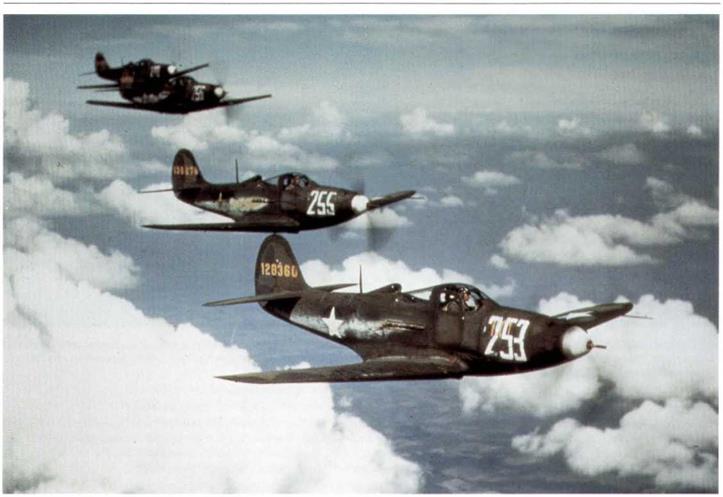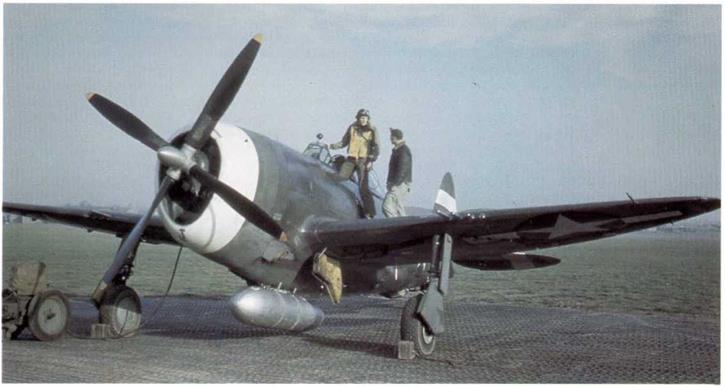. Combat Aircraft Distinctive Markings,. Invasion Stripes, and Unit Insignia
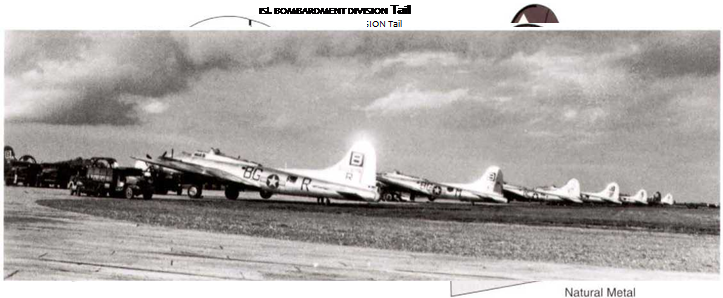
Nice line up of B-17s of the 95th BG, 13th CBW, 3rd Air Div, Eighth Air Force, at Poltava, Russia after their shuttle bomb mission over Germany on June 21, 1944. Nearest aircraft is B-17G-55-BO, 42-102678, aircraft BG-R of the 334th BS. Next is B-17G, serial incomplete, aircraft BG-M, with a replacement camouflaged rudder. Next is B-17G-20-VE, 42-97599, aircraft OE-T of the 335th BS; note it does not have the black group rectangle on the tail yet. The sixth aircraft is still fully camouflaged, and has the "B” in black on white tail marking. All of these markings are to ВСІ 55-14, dated December 25,1943. (USAF)
 |
Boeing B-17E-BO, 41-9100, aircraft FR-U, was the lead ship for the 379th BG, but was attached to the 525th BS. It was painted in dark olive drab and white stripes alt over; the stripes below the wing ran from front to rear, and those under the horizontal tail were spanwise. The group marking, black tetter “K” on a white triangle, with a dark olive drab outline. Code letters were in white, with the aircraft serial number and letter “U” on the fin in yellow. It was seen on July 24, 1944. (USAF)
![]()
|
|
|
|
|
|
|
|
|
|
|
Three B-17s of the 323rd BS, 91st BG, 1st CBW, 1st Air Div, Eighth Air Force, show the latest changes to the CADMs, in ВСІ 55-21, dated October 16,1944. All of the aircraft, natural metal and camouflaged, are carrying the new red vertical tail areas, together with red wing tips and horizontal stabilizers (not elevators). Nearest aircraft is B-17G-45-BO, 42-97304, aircraft OR-C; on its right is B-17G-30-BO, 42-31908, aircraft OR-R, in camouflage, and behind is B-I7G-49-BO, 42-97271, aircraft OR-B. Squadron code letters are in yellow on camouflage and black on natural metal. November, 1944. (CSAF)
|
|
Boeing B-17G-35-DL, 42-107033, aircraft DF-D of the 324th BS, 91st BG, 1st CBW, 1st Air Div, Eighth Air Force, in very shiny natural metal finish carries the latest CAMDs to ВСІ 55-21, dated June 23, 1944. For the 1st Air Div, there was little change except that the natural metal finish changed the Air Div triangle from white to black, reversing the color of the group letter in the process from black to white, and changing the squadron code letters from yellow to black. More colorful changes were to come later in 1944, as the strength of the Eighth Air Force built up rapidly. (USAF)
|
|
Boeing B-17G-45-BO, 42-97330, aircraft MS-S of the 535th BS, 381st BG, 1st CBW, 1st Air Div, Eighth Air Force, is seen carrying the new red vertical tail, wing tip and horizontal stabilizer (not elevators) markings, added by ВСІ 55-21, dated October 16,1944. These CADMs remained unchanged for the 1st Air Div until the end of the war. (USAF)
|
|
Boeing B-17G-95-BO 43-38810, aircraft SC-V of the 612th BS, 401st BG, 94th CBW, 1st Air Div, plus 43-38733, 43-30541, and 43-37780, plus others, lined upon March 19, 1945.They are carrying the new yellow, trimmed with black, sloping band on the vertical tail, added by ВСІ 5521, dated October 16, 1944. Note that there are some variations in the positioning and size of the triangle markings. Seen at Deenthorpe, England on March 19,1945. (USAF)
|
|
Boeing B-17G-75-BO, 43-37921, aircraft UX-N of the 327th BS, 92nd BG, 40th CBW, 1st Air Div, seen in 1945 at one of the forward strips in Belgium. Barely visible is the red band across the vertical tail, with its tower edge in line with the base of the triangle. The unit code letters appear to be in insignia blue rather than black; compare with the star insignia and the black triangle. (William L. Swisher)

мММ i ■
■■■
Consolidated B-24 D-20-Со, 41-24215, aircraft “Z” of the 445th BG, 2nd Bomb Div, Eighth Air Force, at Tihenham, England, in 1944. Note that the aircraft radio call number presentation is incorrect in that it shows both of the year (1941) digits at the beginning of the number; the number “4” should have been omitted. This formation lead aircraft was painted with wide orange bands all over the fuselage and vertical tails. Note that the large letter “F" on the fuselage has lights in all of its horizontal and vertical strokes. (USAF)
|
|
Consolidated B-24H or J, serial unknown, aircraft J4-M “Final Approach”, of the 753rd BS, 458th BG, 96th CBW, 2nd Air Div, waiting for take-off at Horsham St. Faith, England, on the Group’s 200th mission. Dark olive drab and neutral gray finish, tail markings are a white vertical stripe on red vertical surfaces. (USAF)
|
|
Consolidated B24H, serial unknown, aircraft J3-P, of the 755th Bs, 458th BG, 96th CBW, 2nd Air Div. The markings of the 2nd Air Div were changed to colored vertical tails by ВСІ 55-21, dated June 23, 1944. This aircraft has the red tail with a white vertical band of the 458th BG, together with the earlier upper right wing marking of a white letter “K” on a black circle (for natural metal aircraft). Late 1944. (USAF)
|
|
Consolidated B-24H, serial unknown, aircraft Z5-E “The Shack”, of the 754th BS, 458th Bg, 96 CBW, 2nd Air Div. Red tail with a white vertical stripe. Note the grayed-out fuselage insignia, a somewhat superfluous effort! Seen at Horsham St. Faith, England, on February 26,1945.
|
|
Consolidated B-24H-L-FO, 42-7478, aircraft ЕС-P bar, “Flying Crusader” of the 578th BS, 392nd BG, 14th CBW, 2nd Air Div, typifies a late camouflaged B-24. The vertical tail markings are white, with a black horizontal stripe. Note that the right tail has received a replacement dark olive drab rudder, still showing its medium green blotches and its portion of the old circle marking painted over. The group code letter “D” does not appear on the right wing circle. Code letters on fuselage are gray and the radio call number on the fin are in yellow. Aircraft letter on the tail is white. (USAF)
|
|
Consolidated B-24H, serial number unknown, aircraft “I” of the 715th BS, 448th BG, 20th CBW, 2nd Air Div, taking off from its base of Seething, England. It is on the way to drop supplies to Allied troops battling east оГ the Rhine river in Germany, in the spring of 1945. Group markings were a black diagonal bar across the yellow tail; the squadron insignia was the yellow diamond on the black bar. The aircraft letter is within the diamond. (USAF)
 Boeing B-17 of the 452nd BG, 45th CBW, 3rd Air Div is seen from above, showing the group letter "L” in a white rectangle above the right outer wing. Taken over Berlin on April 29, 1944, it appears as if both outer wing panels have been repaired, but not repainted prior to this mission. (USAF)
Boeing B-17 of the 452nd BG, 45th CBW, 3rd Air Div is seen from above, showing the group letter "L” in a white rectangle above the right outer wing. Taken over Berlin on April 29, 1944, it appears as if both outer wing panels have been repaired, but not repainted prior to this mission. (USAF)
|
|
Consolidated B-24H-15-FO, 42-52618, aircraft R5-K “Chief Wapello”, of the 839th BS, 487th BG, was in one of the five H-24 groups in the 3rd Air Div, which also had nine B-17 groups. It proved to he too difficult to operate the two types together, and they were replaced by B-17s after only a few months. The group code letter “P” is seen on the tail and on the wing in the white rectangle. Code tetters were gray, and the aircraft letter “K” was in yellow in both positions, as was the radio call number. (USAF)
|
|
Boeing B-17G-45-BO, 42-97258, of the 452nd BG, 45th CBW, 3rd Air Div, with a lot of company, on the way to Germany in May, 1944, No squadron codes were used by this group. The CADMs are to ВСІ 55-14, dated December 25, 1943. Note that this B-17 has a replacement camouflaged outer right wing panel. (USAF)
|
|
Boeing B-17G-65-VE, 44-8439, aircraft “R”, of the 95th BG, 13th CBW, 3rd Air Div, seen at a strip in Belgium in 1945. It has the usual Mack rectangle on the tail and the red band up the trailing edge of the rudder; however, a replacement rudder has not yet been painted in the red color. A red band at an angle across the lower left outer wing completes the markings. Date not known, but after January 11,1945, and prior to March 7,1945, in conformance with the latest CADM orders. (USAF)
|
|
Boeing B-17G-70-BO, 43-37928, aircraft “D”, of the 490th BG, 93rd CBW, 3rd Air Div, seen in Belgium in 1945. The group marking is a red band across the vertical tail, one-third of its height, together with red hands across the wing, at the inner end of the aileron, and across the middle of the horizontal tail. The 9rd CBW adopted these markings when it was originally equipped with B-24s, and carried them across when the 3rd Air Div became an ail B-17 force in summer 1944. It was the only group in the 3rd Air Div whose markings could be seen easily, and this lead to major changes in the other group markings in the 3rd Air Div in early 1945. (William L, Swisher)
|
|
Two B-17Gs, 42-97627 in natural metal, and 42-97555, in camouflage, of the 413th BS, 96th BG, 45th CBW, 3rd Air Div, are seen on their bomb run over the target in late 1944. Using the H2X radar housed in the usual ball-turret position, these acted as radar path-finders for the main bomber force in bad weather when the target could not be seen visually. As they were used with any of the 3rd Air Div forces, they did not carry the usual group tail markings. (USAF)
|

ALLIED INVASION STRIPES











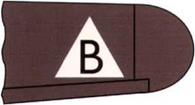
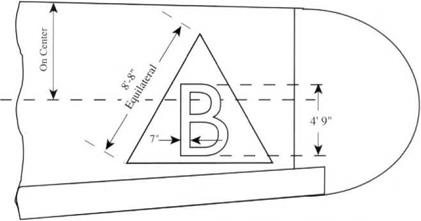

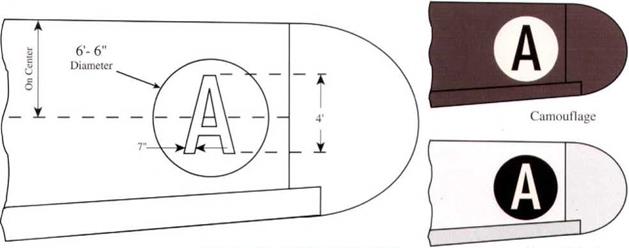
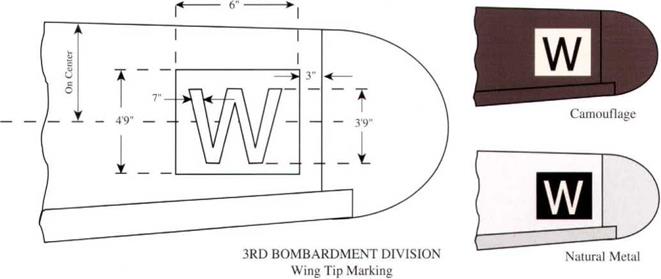
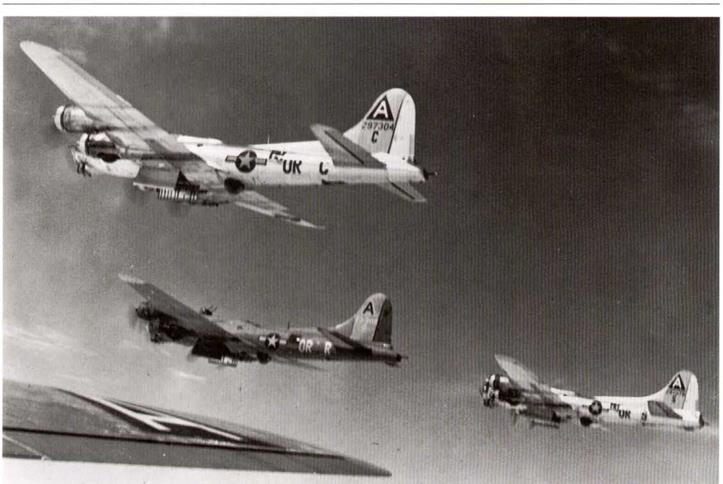

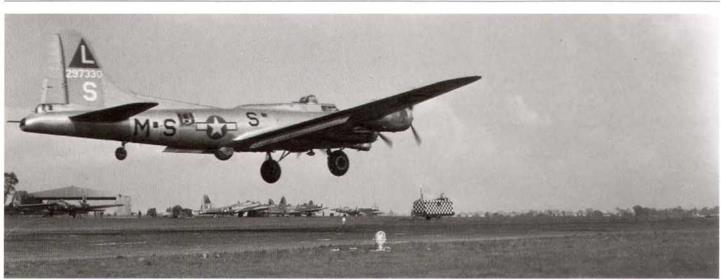

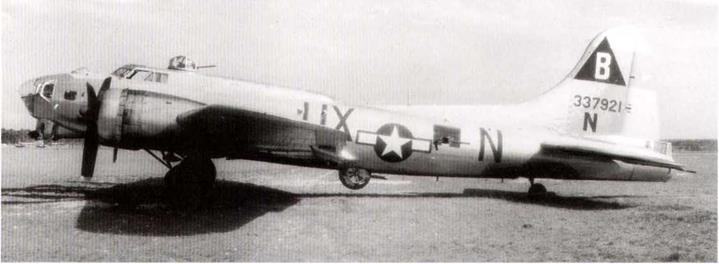

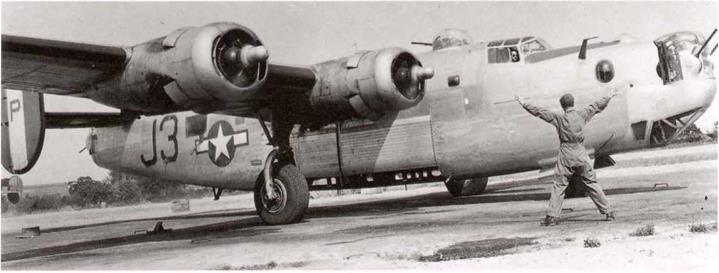
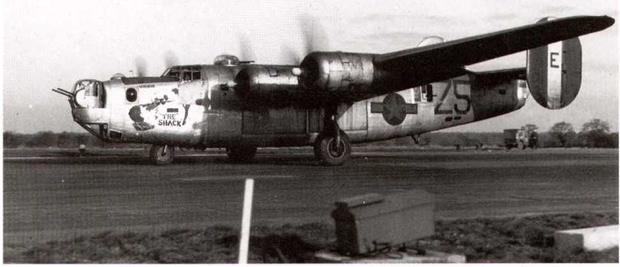

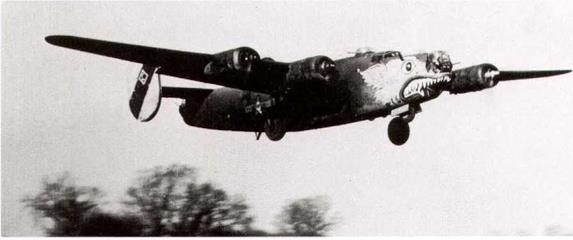
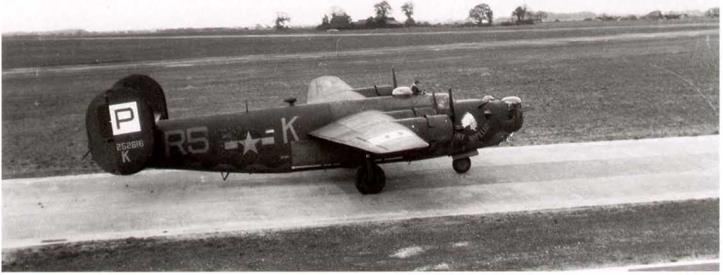
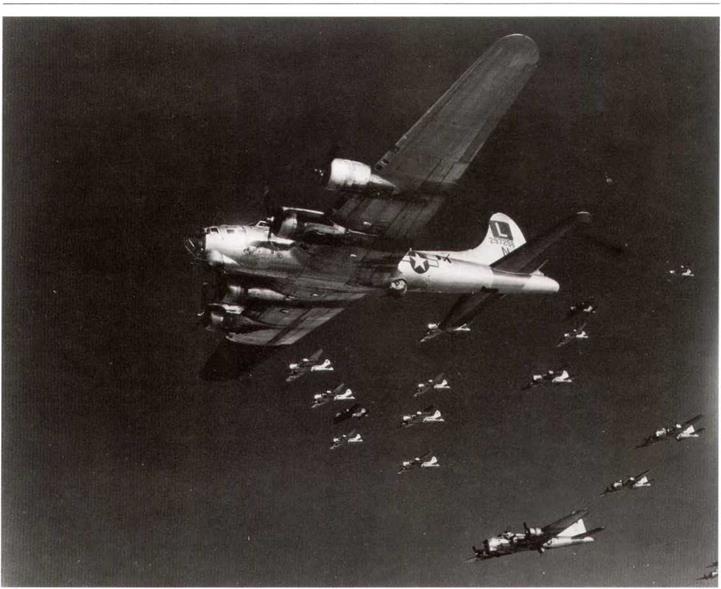


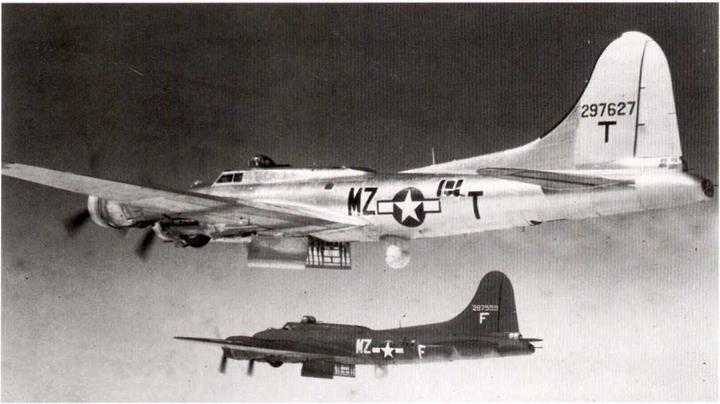

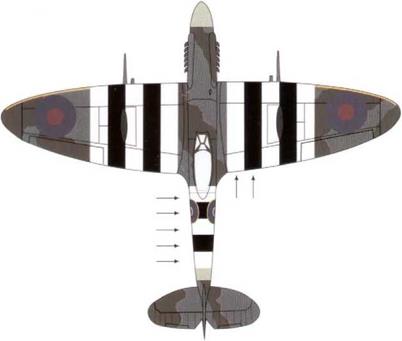
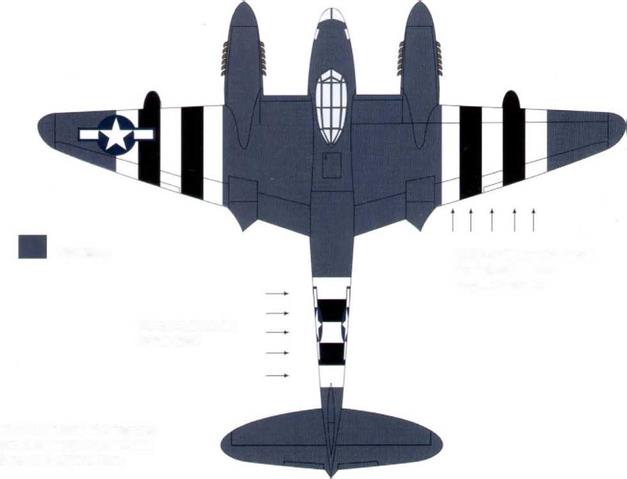
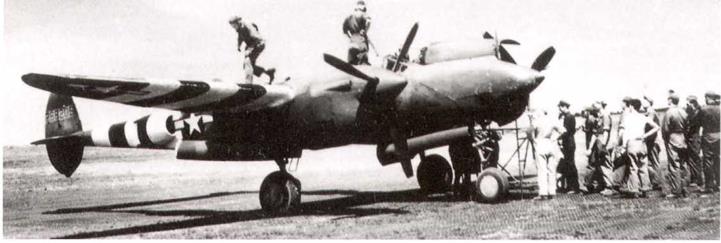
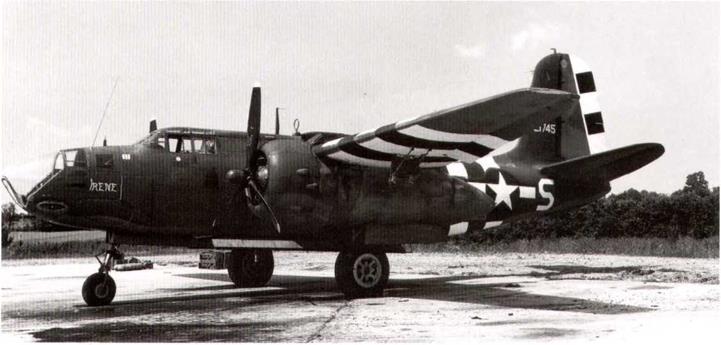


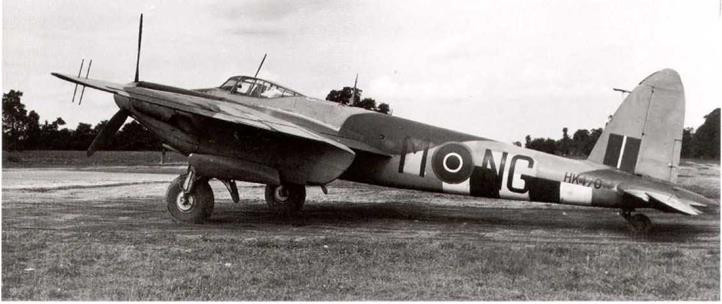

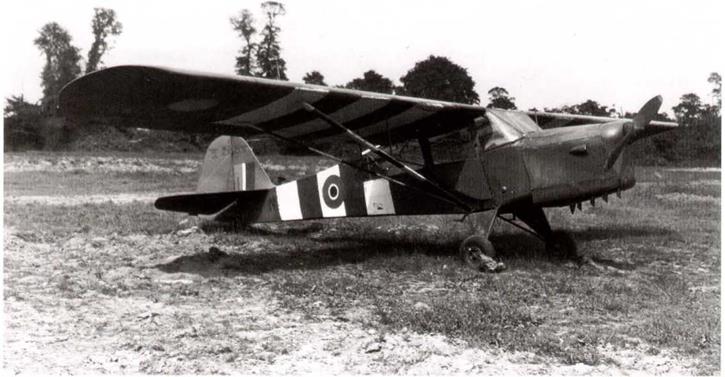
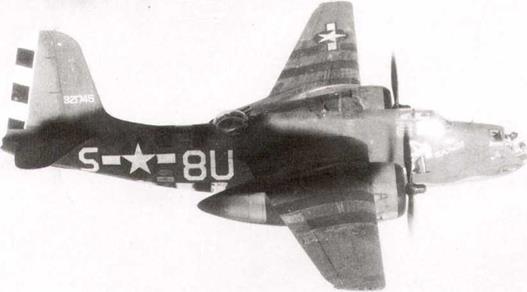
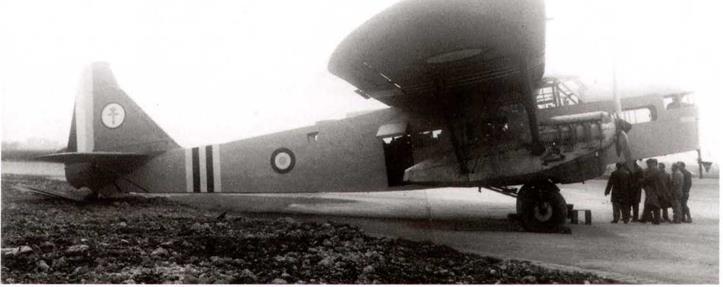
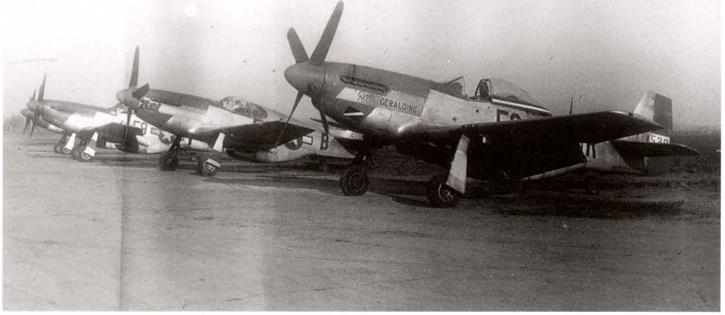
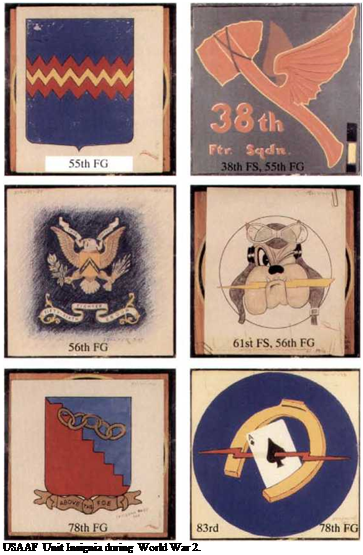
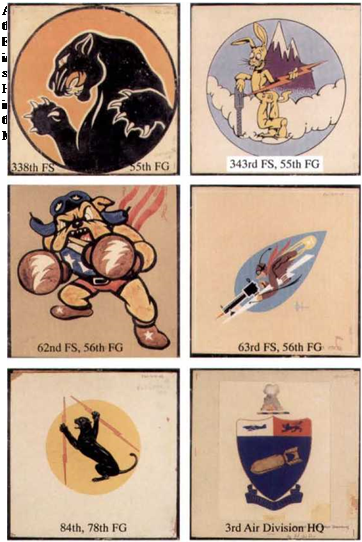
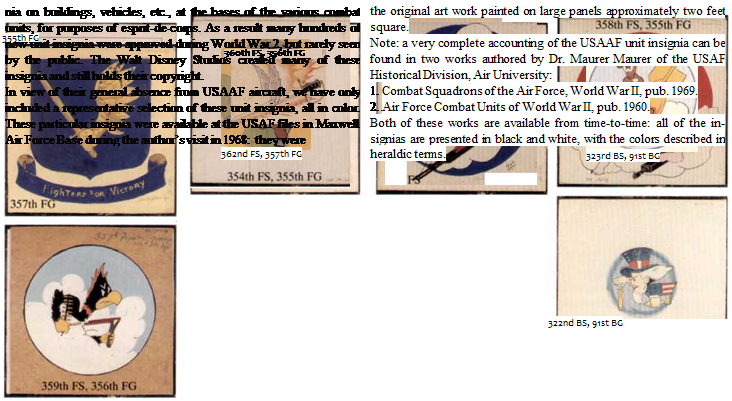
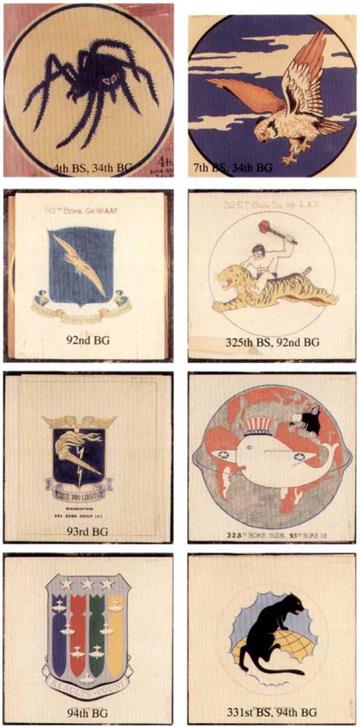
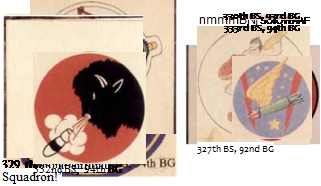
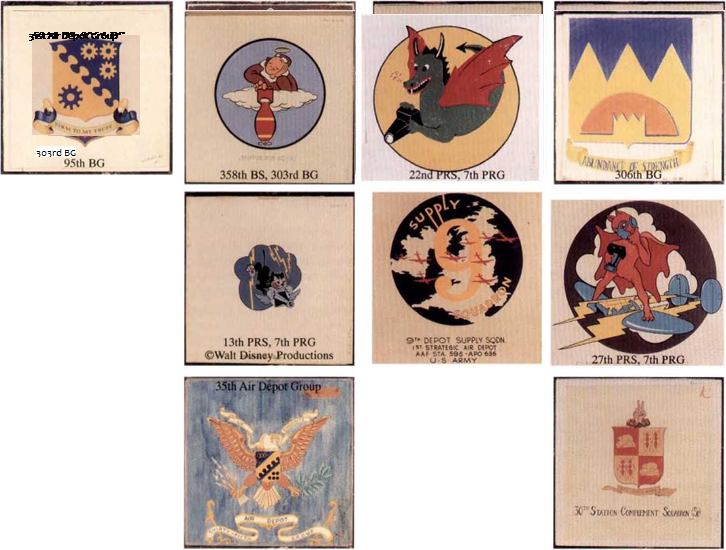
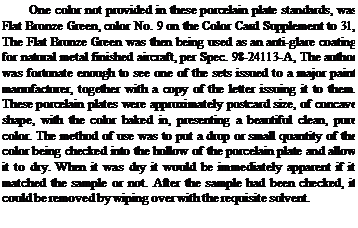
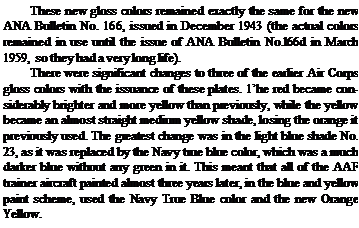
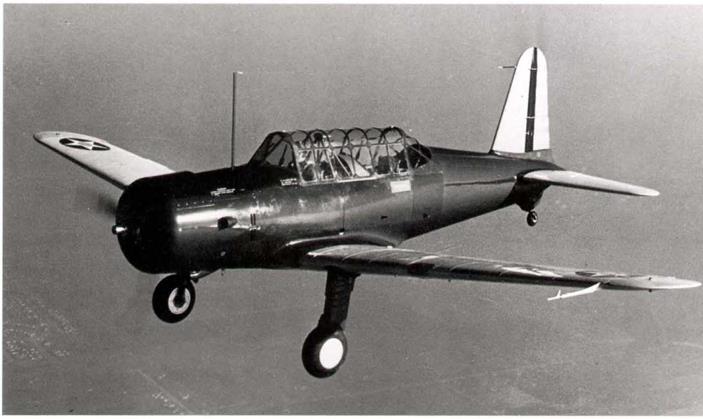
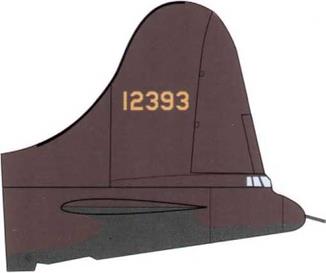
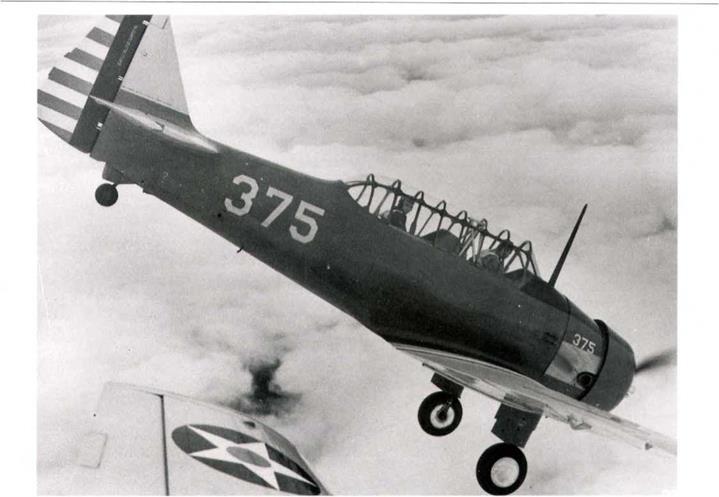
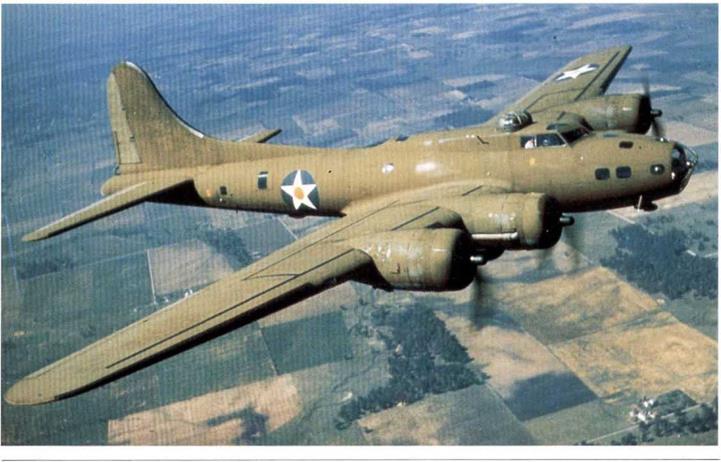
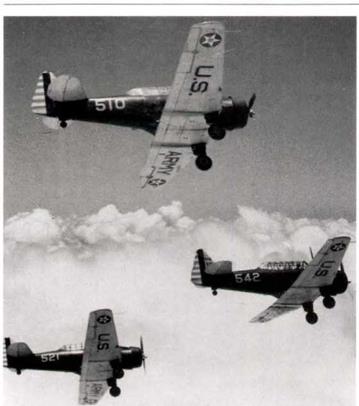 Due to the varied sizes and configurations of Army Air Force airplanes, it was impractical to specify a standard height of letters that would meet she requirements for all airplanes. In general, the height of the numerals was such as to make the designator readily discernible from a distance of approximately 150 yards (137 m). The numerals comprising the designator were to appear in one line painted in a centrally located position.
Due to the varied sizes and configurations of Army Air Force airplanes, it was impractical to specify a standard height of letters that would meet she requirements for all airplanes. In general, the height of the numerals was such as to make the designator readily discernible from a distance of approximately 150 yards (137 m). The numerals comprising the designator were to appear in one line painted in a centrally located position.


